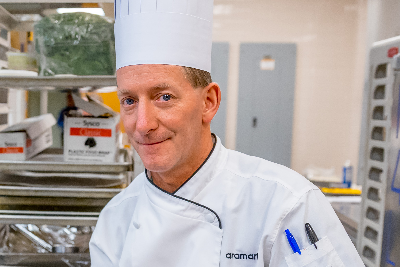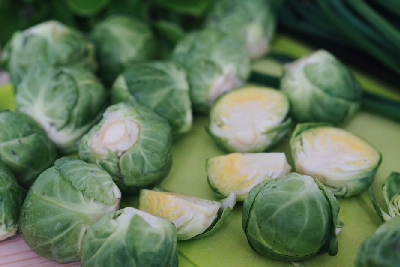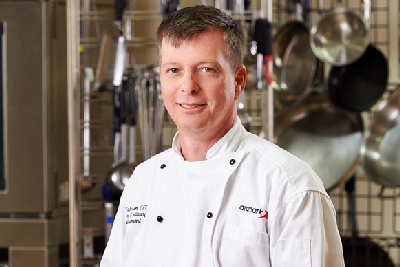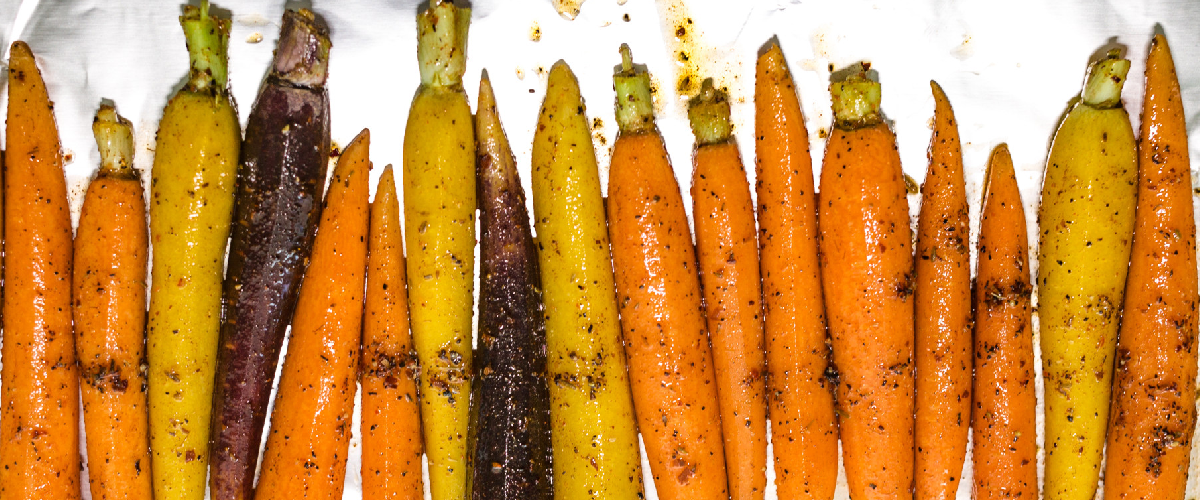It may be cold outside, but there’s one surefire way to heat things up: Get into the kitchen!
Say hello to these three winter-friendly cooking techniques that let you pile on flavor without piling on unnecessary calories. And don’t be put off by words like “braise;” our Aramark chefs are here to break things down for you.
 ROASTING
ROASTING
Get ready for some oven lovin’. “Roasting is one of my favorite ways to cook vegetables like cauliflower or Brussels sprouts,” Chef Bill Allen tells us.
How to do it: Coat food lightly in olive oil, sprinkle with a pinch of salt and your favorite herbs and spices. Spread it all out in a shallow baking pan. Cook uncovered in the oven at 350°F or higher. Cooking time depends on what you’re roasting. Roasting is great for vegetables like sweet potatoes and zucchini, or chicken or larger cuts of meat, if you’re feeling carnivorous.
 Why we love it: First, the oven does most of the work! Only a small amount of oil is required, making it a healthier alternative to frying or sautéing. The even heat cooks food consistently, and intensifies flavors. And there’s minimal cleanup, especially if you roast on foil or parchment. By roasting a meal in stages, you can add items to the same pan according to their roasting times (no multiple dishes).
Why we love it: First, the oven does most of the work! Only a small amount of oil is required, making it a healthier alternative to frying or sautéing. The even heat cooks food consistently, and intensifies flavors. And there’s minimal cleanup, especially if you roast on foil or parchment. By roasting a meal in stages, you can add items to the same pan according to their roasting times (no multiple dishes).
Try this: Preheat oven to 350°F. Clean, remove stems, and halve Brussels sprouts. Toss with a few tablespoons olive oil, just a pinch of salt, ground black pepper, and minced garlic. Place sprouts in a single layer, cut sides down, on a sheet pan. Roast 20-30 minutes, flipping once, until they are lightly browned and tender.
BRAISING
Sounds fancy, right? Fear not, says Chef Scott Zahren. “This is my favorite of all cooking techniques. The flavors and tenderness of the food are the real stars.”
How to do it: Braising involves cooking foods—usually for a long time—in a liquid to create steamy, sumptuous layers of flavor. Season a large cut of meat and brown it in a Dutch oven or other heavy pot; remove. Repeat the process with quartered onions and vegetables, especially root veggies, like carrots and parsnips. Add some tomato paste and a few tablespoons of flour to the empty pot, browning 3 to 5 minutes. Fill the pot halfway with low sodium stock or other braising liquid, scrape any browned bits from the bottom, and bring liquid to a boil. Return meat and vegetables to the pot and simmer covered until tender.
Why we love it: Braising tenderizes less expensive pieces of meat, turning them into a rich-tasting recipe. While the cooking time is longer side (2 to 4 hours, depending on the cut), it’s hands-off. You can even use your slow cooker after first browning the meat! Chef Scott suggests thickening the broth with pulses such as beans, chickpeas, lentils, or dry peas instead of flour for adding great nutritional benefits and texture.
STOVETOP GRILLING
If the cold weather has you pining for the backyard charcoal grill, here’s a fix: Grill inside! “A stovetop grill pan can be used on any type of range,” says Chef Bill. “They’re usually cast iron, and have ridges to get those grill marks we all love.”
How to do it: Think: Hot and fast! Heat your stovetop grill pan, and brush it with a little oil (nonstick cooking spray also works). Lightly season chicken breasts, seafood, vegetables—whatever!—as you like them. Put them in the grill pan to cook through one side. Flip them. Eat them. It’s really that simple.
Check out our indoor grilling video for some flavor-boosting tips.
Why we love it: It’s fast. There’s minimal added fat and the pan’s ridges allow some fat to drain away, making it healthier. Also, did we mention grill marks?
Try this: Chef Bill loves grilling seafood indoors on the stovetop. Combine 1 pound of shrimp or salmon fillets with 1 tablespoon low-sodium soy sauce, 1 teaspoon lime juice, ½ teaspoon sriracha hot sauce, ¾ teaspoon vegetable oil, and 1 teaspoon chopped cilantro. Marinate for 1 hour. Preheat grill pan and remove the seafood from the marinade. Place evenly on the grill surface, and cook until it reaches an internal temperature of 145°F (2 to 3 minutes per side).
Note: Since everyone’s health history and nutritional needs are so different, please make sure that you talk with your doctor and a registered dietitian to get advice about the diet and exercise plan that‘s right for you.

